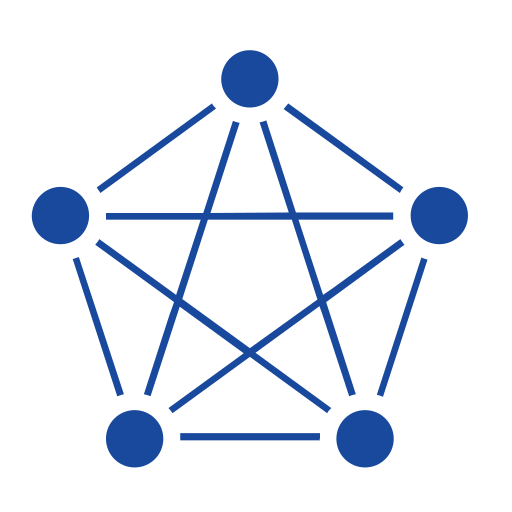Snowflake vs TDengine
A detailed comparison
Compare Snowflake and TDengine for time series and OLAP workloads
Learn About Time Series DatabasesChoosing the right database is a critical choice when building any software application. All databases have different strengths and weaknesses when it comes to performance, so deciding which database has the most benefits and the most minor downsides for your specific use case and data model is an important decision. Below you will find an overview of the key concepts, architecture, features, use cases, and pricing models of Snowflake and TDengine so you can quickly see how they compare against each other.
The primary purpose of this article is to compare how Snowflake and TDengine perform for workloads involving time series data, not for all possible use cases. Time series data typically presents a unique challenge in terms of database performance. This is due to the high volume of data being written and the query patterns to access that data. This article doesn’t intend to make the case for which database is better; it simply provides an overview of each database so you can make an informed decision.
Snowflake vs TDengine Breakdown
 |
 |
|
| Database Model | Cloud data warehouse |
Time series database |
| Architecture | Snowflake can be deployed across multiple cloud providers, including AWS, Azure, and Google Cloud |
TDengine can be deployed on-premises, in the cloud, or as a hybrid solution, allowing flexibility in deployment and management. |
| License | Closed source |
AGPL 3.0 |
| Use Cases | Big data analytics, Data warehousing, Data engineering, Data sharing, Machine learning |
IoT data storage, industrial monitoring, smart energy, smart home, monitoring and observability |
| Scalability | Highly scalable with multi-cluster shared data architecture, automatic scaling, and performance isolation |
Horizontally scalable with clustering and built-in load balancing. TDengine also provides decoupled compute and storage as well as object storage support for data tiering in some versions |
Looking for the most efficient way to get started?
Whether you are looking for cost savings, lower management overhead, or open source, InfluxDB can help.
Snowflake Overview
Snowflake is a cloud-based data warehousing platform that was founded in 2012 and officially launched in 2014. It is designed to enable organizations to efficiently store, process, and analyze large volumes of structured and semi-structured data. Snowflake’s unique architecture separates storage, compute, and cloud services, allowing users to independently scale and optimize each component.
TDengine Overview
TDengine is a high-performance, open source time series database designed to handle massive amounts of time series data efficiently. It was created by TAOS Data in 2017 and is specifically designed for Internet of Things (IoT), Industrial IoT, and IT infrastructure monitoring use cases. TDengine has a unique hybrid architecture that combines the advantages of both relational and NoSQL databases, providing high performance, easy-to-use SQL for querying, and flexible data modeling capabilities.
Snowflake for Time Series Data
While Snowflake is not specifically designed for time series data, it can still effectively store, process, and analyze such data due to its scalable and flexible architecture. Snowflake’s columnar storage format, combined with its powerful query engine and support for SQL, makes it a suitable option for time series data analysis.
TDengine for Time Series Data
TDengine is designed from the ground up as a time series database, so it will be a good fit for most use cases that heavily involve storing and analyzing time series data.
Snowflake Key Concepts
- Virtual Warehouse: A compute resource in Snowflake that processes queries and performs data loading and unloading. Virtual Warehouses can be independently scaled up or down based on demand.
- Micro-Partition: A storage unit in Snowflake that contains a subset of the data in a table. Micro-partitions are automatically optimized for efficient querying.
- Time Travel: A feature in Snowflake that allows users to query historical data at specific points in time or within a specific time range.
- Data Sharing: The ability to securely share data between Snowflake accounts, without the need to copy or transfer the data.
TDengine Key Concepts
- Super Table: A template for creating multiple tables with the same schema. It’s similar to the concept of table inheritance in some other databases.
- Sub Table: A table created based on a Super Table, inheriting its schema. Sub Tables can have additional tags for categorization and querying purposes.
- Tag: A metadata attribute used to categorize and filter Sub Tables in a Super Table. Tags are indexed and optimized for efficient querying.
Snowflake Architecture
Snowflake’s architecture separates storage, compute, and cloud services, allowing users to scale and optimize each component independently. The platform uses a columnar storage format and supports ANSI SQL for querying and data manipulation. Snowflake is built on top of AWS, Azure, and GCP, providing a fully managed, elastic, and secure data warehouse solution. Key components of the Snowflake architecture include databases, tables, virtual warehouses, and micro-partitions.
TDengine Architecture
TDengine uses a cloud native architecture that combines the advantages of relational databases (support for SQL querying) and NoSQL databases (scalability and flexibility).
Free Time-Series Database Guide
Get a comprehensive review of alternatives and critical requirements for selecting yours.
Snowflake Features
Elasticity
Snowflake’s architecture allows for independent scaling of storage and compute resources, enabling users to quickly adjust to changing workloads and demands.
Fully Managed
Snowflake is a fully managed service, eliminating the need for users to manage infrastructure, software updates, or backups.
Security
Snowflake provides comprehensive security features, including encryption at rest and in transit, multi-factor authentication, and fine-grained access control.
Data Sharing
Snowflake enables secure data sharing between accounts without the need to copy or transfer data.
TDengine Features
Data ingestion
TDengine supports high-speed data ingestion, with the ability to handle millions of data points per second. It supports batch and individual data insertion.
Data querying
TDengine provides ANSI SQL support with additional that allows users to easily query time series data using familiar SQL syntax. It supports various aggregation functions, filtering, and joins.
Data retention and compression
TDengine automatically compresses data to save storage space and provides data retention policies to automatically delete old data.
Snowflake Use Cases
Data Warehousing
Snowflake provides a scalable, secure, and fully managed data warehousing solution, making it suitable for organizations that need to store, process, and analyze large volumes of structured and semi-structured data.
Data Lake
Snowflake can serve as a data lake for ingesting and storing large volumes of raw, unprocessed data, which can be later transformed and analyzed as needed.
Data Integration and ETL
Snowflake’s support for SQL and various data loading and unloading options makes it a good choice for data integration and ETL
TDengine Use Cases
IoT data storage and analysis
TDengine is designed to handle massive amounts of time series data generated by IoT devices. Its high-performance ingestion, querying, and storage capabilities make it a suitable choice for IoT data storage and analysis.
Industrial IoT monitoring
TDengine can be used to store and analyze data from industrial IoT sensors and devices, helping organizations monitor equipment performance, detect anomalies, and optimize operations.
Infrastructure Monitoring
TDengine can be used to collect and analyze time series data from IT infrastructure components, such as servers, networks, and applications, facilitating real-time monitoring, alerting, and performance optimization.
Snowflake Pricing Model
Snowflake offers a pay-as-you-go pricing model, with separate charges for storage and compute resources. Storage is billed on a per-terabyte, per-month basis, while compute resources are billed based on usage, measured in Snowflake Credits. Snowflake offers various editions, including Standard, Enterprise, Business Critical, and Virtual Private Snowflake, each with different features and pricing options. Users can also opt for on-demand or pre-purchased, discounted Snowflake Credits.
TDengine Pricing Model
TDengine is open source and free to use under the AGPLv3 license. TDengine also offers commercial licenses and enterprise support options for organizations that require additional features, support, or compliance with specific licensing requirements.
Get started with InfluxDB for free
InfluxDB Cloud is the fastest way to start storing and analyzing your time series data.
